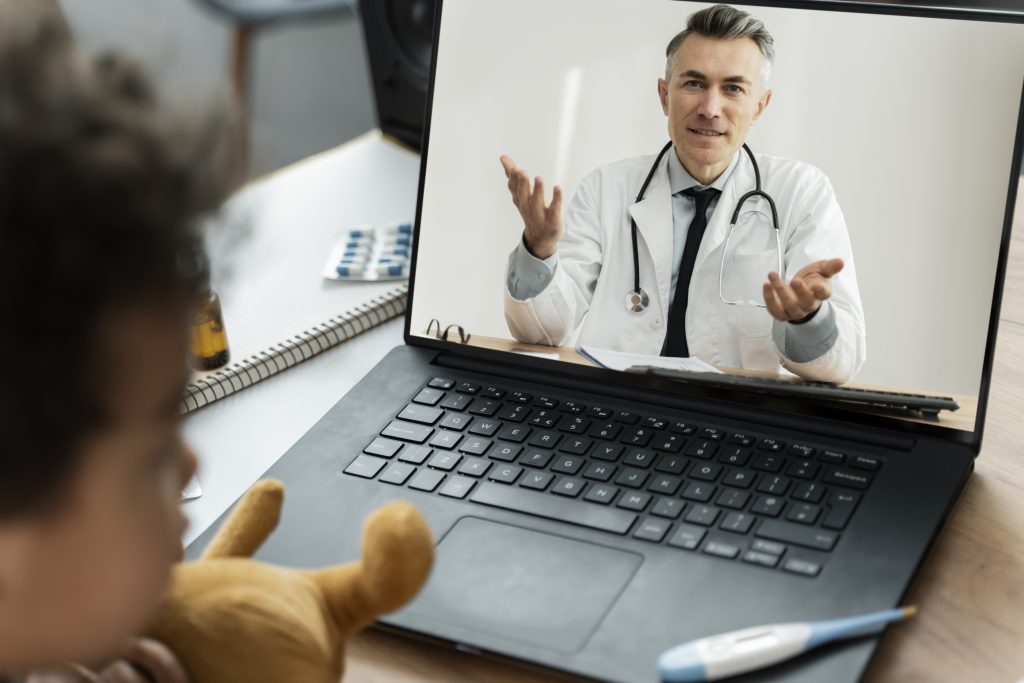
In the current environment, putting a focus on e-health is essential. The digital culture is based on a foundation of sharing on which people are empowered and feel they are making a difference. In the current environment, putting a focus on e-health is essential. The digital culture is based on a foundation of sharing on which people are empowered and feel they are making a difference. In medicine, this implies both consumers, who seek to improve their health and quality of life through technologies and physicians interested in providing quality services at a reduced budget. However, the integration of telemedicine to the whole population of a country depends on the country’s level of digitalization.
From human-driven event to software-driven actions
How does a digital solution help you attain well-being?
According to Gartner Glossary, “Digitalization is the use of digital technologies to change a business model and provide new revenue and value-producing opportunities; it is the process of moving to a digital business.” At its core, digitalization works on transforming the business model to create value.
Digital technologies applied in medicine lead to the concept of telemedicine. In this case, telemedicine refers to the provision of clinical or medical services to patients through technology such as video conferencing, text messaging, and/or audio calls. It aims to provide fast and convenient patient care while technology is user friendly both for patients and doctors.
Nowadays, people go online to look up information related to a specific disease or medical problem, even for a particular medical treatment/procedure, and the search for a diverse range of health-related issues is growing. Therefore, the need for online medical consultations becomes a necessity. The synergies between healthcare and technology have generated telemedicine to rise to the level where it can be deployed under three methods.
Types of Telemedicine
Interactive (Synchronous) – patients and physicians communicate remotely, in real-time, using for example video-conference (such as HyperTalk MedDesk) to hear about the symptoms and offer the diagnosis. Teleconsultations work as well for medical advice and regular prescription of drugs or medical tests.
Store and Forward (Asynchronous) – which implies that health care providers share patient information with a practitioner from another location, data such as medical images, X-rays, blood results, any type of documentation and be shared with a specialist when needed and with the patient’s approval (usually in dermatology, radiology, pathology).

Remote patient monitoring – caregivers monitor patients that reside at home by using mobile medical devices to collect data (blood sugar, or blood pressure).
What’s on the agenda of Telemedicine?
Working in favor of healing at a distance, Telemedicine improves patient’s outcomes by increasing his/her access to healthcare and medical information. From medical advice to diagnosis and supervising, telemedicine boosts the classical in-person visits as follows:
- Encourages a preventive lifestyle by an early diagnosis;
- Generates continuous collection of information through monitoring – this offers an overview of the patient’s current state of health;
- Increases productivity: appointments speed up, a patient can see the doctor in an instant, can schedule follow-ups at their convenience, beneficial for both urgent and non-urgent medical matters;
- Enhances access: people with busy schedules or children, or located in isolated/rural locations can benefit from clinical services even outside of normal appointment hours. Medical professionals can expand their reach beyond the physical office to offer health care for at-risk patients;
- Patient satisfaction: less travel to access medical practices, prevents crowded medical facilities as well as sitting in waiting rooms;
- Optimizes patient follow up and monitoring;
- Physicians are available after normal business hours;
- Facilitates information exchange between primary care physicians and specialists located at different places;
- Offers great potential to remote communities with limited access to medical consultants;
- Exposure of physicians for future practices;
- The number of missed appointments or no-shows decreases.
To sum things up, telemedicine: makes healthcare more accessible, cost-effective, and increases patient engagement. Treatment may still require physical visits as telemedicine comes to enhance the medical services, not to replace them completely. However, digital technologies are integrated into our everyday life, from social aspects to the work we are doing, even to our well-being and healthcare.




